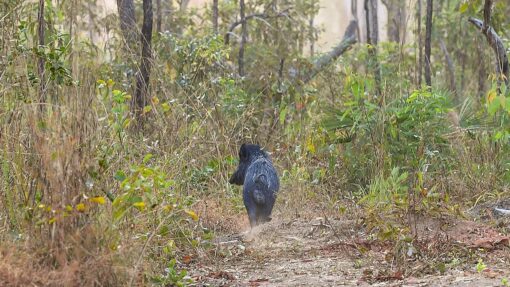Climate case fails to stop gas exploration in NT
(A)manda Parkinson |

A test case to measure the future environmental impacts of emissions from onshore fracking exploration has failed in the Northern Territory after the Supreme Court found in favour of Tamboran Resources.
Central Australian Frack Free Alliance claimed former environment minister Lauren Moss approved an exploration licence for US-based gas company, Tamboran Resources, to drill 12 wells 600km south of Darwin without considering the extent of future environmental impacts.
CAFFA claimed that if exploration was to proceed to production then the environmental management plan which formed part of Tamboran’s exploration permit was inadequate.
Chief Justice Michael Grant, however, said the predication of the argument was made on “hypothetical production”.
“The [argument] pressed by the plaintiff would require an environment management plan for exploration activity to address the notional environmental impacts and risks of hypothetical production,” he wrote in his decision.
“The inherent nature of exploration activity is that the production hypothesis remains in a state of flux in relation to such things as volume, location, quality, recovery methodology and transportation.”
Essentially CAFFA attempted to prove the current protections inadequately assess for future production.
CAFFA argued precedence was set in a Queensland case that approved the construction of the Nathan Dam in the Great Barrier Reef catchment area. However, Justice Grant found the specifics of the case, including it was a heritage site, were not relevant in the territory.
He noted the law delineates between the “petroleum interests” and that of a production licence which requires a “commercially exploitable accumulation of petroleum” in the region.
The distinction was imperative to the case, which aimed to show the environmental management plan didn’t explore the potential for over a million tonnes of greenhouse gas emissions if production was permitted.
Justice Grant stated the minister’s approval of the permit was justified as the law does not explicitly require her to refer it for further environmental scrutiny.
He wrote the statutory decision-maker can authorise and grant permission for action “even if the proposed action has the potential to have a significant impact on the environment”.
Furthermore he said the definition of “environmental impact” requires that any “potential adverse change to the environment” must still have a causal relationship with the “regulated activity”, in this case the exploration via wells.
“The definition of ‘environmental impact’ is expansive only in the sense that the regulated activity need not be the sole cause of the adverse change,” he wrote.
CAFFA had sought several Tamboran documents showing the estimated total volume of petroleum in the region, but that application was rejected when its case was not upheld.
Following his decision, Justice Grant gave parties 28 days to file for dismissal, remuneration and damages as a result of the case.
CAFFA said in a statement it is considering its options after the Supreme Court decision.
Spokesperson Hilary Tyler said the it was “disappointing, disturbing and a disaster” for the territory’s climate.
“By approving this exploration application, the minister has opened the way for Tamboran to drill vast new gas fields across the heart of the territory,” she said.
“Fracking contributes significantly to runaway climate change which is already affecting the lives of all Territorians, especially those with fewest resources to mitigate these consequences.
“Even if today’s judgment means the minister was not legally required to consider the long-term climate impacts of the fracking industry, long-term planning is essential for the protection of our communities from climate change.”
AAP


